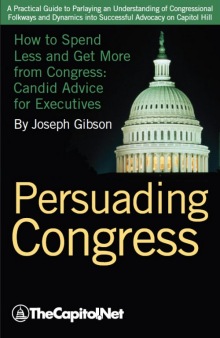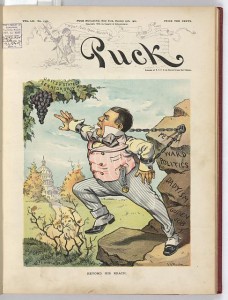How to Contact Congress
TCNHCC.com
Also see
|
Capitol Switchboard: 202-224-3121

Please note that since September 11, 2001, regular mail sent to a member’s Washington, DC office is irradiated and that process adds one to two weeks to mailing time. Faxes get through, but expect many redials. Unless you have an email address for a staffer, forget about sending email directly. One method that does work is to send email using the web-based form on each member’s web site. And remember, members of Congress want to hear from THEIR CONSTITUENTS so indicate your mailing address including your ZIP code. Mail and email from non-constituents is usually ignored.
Couriers are delivering to the Hill, but are expensive. Mail sent to a district office will eventually get through, but it is slow.
Phone calls are best if you are pressed for time. Capitol Switchboard: 202-224-3121.
One thing that has not changed regardless of how you contact your representatives: all members’ primary concern is for their own constituents. So, regardless of how you contact your Senators or your Representative, be sure to include your name and address (including your ZIP code) showing that you are one of their constituents.
If you send a handwritten letter or an email, the more effort that you put into the letter, for example, neatly handwriting it, the more impact it will have. Shorter, succinct letters focusing on one point have more impact than longer rambling letters.
The basic advice is still the same: Write, then call, then meet in person.
With your handwritten note to your 3 members of Congress (your Representative and your 2 Senators) include a Pocket Constitution! See TCNFPC.com to order.
Also see “Proposing Legislation to Congress”
- Different offices prefer different methods of communication. Some offices prefer regular mail, while other offices prefer email. If you send regular mail, handwritten letters can be more effective than typed correspondence if it is neat, and, like all correspondence, courteous, brief, and to the point.
- Write to your own senators or representative. Letters sent to other members will end up on the desk of members from your state.
- With your handwritten note to your 3 members of Congress (your Representative and your 2 Senators) include a Pocket Constitution! See TCNFPC.com to order.
- Make sure your ZIP code appears on the letter. It lets your senators or representative know that you live in their district.
- Write at the proper time, when a bill is about to be discussed in committee or on the floor.
- Use your own words and your own stationery. Avoid signing and sending a form letter.
- Be brief. Members get lots-o-mail. One page, two or three paragraphs.
- Don’t be a “pen pal.” Don’t try to instruct the representative on every issue that comes up.
- Don’t demand a commitment before all the facts are in. Bills rarely become law in the same form as they are introduced.
- Whenever possible, identify all bills by their number (use Congress.gov).
- If possible, include pertinent editorials from local newspapers.
- Be constructive. If a bill deals with a problem you admit exists but you believe the bill is the wrong approach, tell what you think the right approach is.
- Be courteous. No one, including a member of Congress, responds favorably to rudeness or threats.
- If you have expert knowledge or wide experience in particular areas, share it with the member. But don’t pretend to wield vast political influence.
- Be appreciative. Write to the member when he or she does something you approve of. A note of appreciation will make your members of Congress remember you more favorably the next time.
- Feel free to write when you have a question or problem dealing with procedures of government departments. (See our Capitol Learning Audio Course – available as an online download: “What Your Member of Congress Can Do for You.”)
- Write legibly and use the proper form of address:
- Letters to Senators
your name, address and ZIP code
Honorable (full name)
United States Senate
Washington, DC 20510Dear Senator (last name):
(body of letter)Sincerely,
- Letters to Representatives
your name, address and ZIP code
Honorable (full name)
House of Representatives
Washington, DC 20515Dear (Mr. or Ms.) (last name):
(body of letter)Sincerely,
- Letters to Senators
- Follow up with a phone call or visit.
House of Representatives: 202-225-3121 Senate: 202-224-3121Capitol Switchboard: 202-224-3121
You don’t like the current defense spending levels? Upset about the nation’s health care system? Don’t think the government should invest in the space station?
Write your congressman and tell him or her what you think. You won’t be alone: Congress in recent years has been receiving more than 86.9 million pieces of mail annually. This does not even include the faxes and email, which no one counts officially.
About a dozen times a day, Postal Service trucks pull up to the Longworth and Hart office buildings where mail handlers unload big sacks of letters, packages, and most of all, mass-mailed postcards.
The increases on both sides of the Capitol are due to the prevalent use of computerized mass-mailings. In many cases, organizations provide a stamped, addressed postcard with the message already written. All the sender must do is sign his or her name and put it in a mailbox.
In general, Monday is the busiest day of the week, while January through May are the heaviest months. Volume drops off in the summer and does not pick up in the fall unless Congress returns for a lengthy fall session.
Writing Tips
Cap South: Crazy Constituent Calls 1
Also see Citizen’s Handbook to Influencing Elected Officials.
 . . . . . .
. . . . . . 
URL: TCNHCC.com
For more than 40 years, TheCapitol.Net and its predecessor, Congressional Quarterly Executive Conferences, have been teaching professionals from government, military, business, and NGOs about the dynamics and operations of the legislative and executive branches and how to work with them.
Our custom on-site and online training, publications, and audio courses include congressional operations, legislative and budget process, communication and advocacy, media and public relations, testifying before Congress, research skills, legislative drafting, critical thinking and writing, and more.
TheCapitol.Net is on the GSA Schedule, MAS, for custom on-site and online training. GSA Contract GS02F0192X
TheCapitol.Net is now owned by the Sunwater Institute.
Teaching how Washington and Congress work ™




